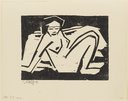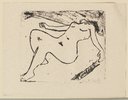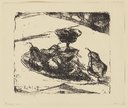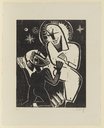Back to top
Karl Schmidt-Rottluff
Painter, Lithographer, Commercial artist (male), Block-cutter, Etcher, Sculptor (male), Woodcarver (male), Publicist and College professor (male)
- Born
- 1884 in Rottluff
- Died
- 1976 in Berlin
- School
- expressionism
187 Works by Karl Schmidt-Rottluff
- In the Kiosk
![In the Kiosk, Karl Schmidt-Rottluff]()
- Praying figure
![Praying figure, Karl Schmidt-Rottluff]()
- Tower in the Park
![Tower in the Park, Karl Schmidt-Rottluff]()
- Akt
![Akt, Karl Schmidt-Rottluff]()
- Akt mit ausgebreiteten Armen
![Akt mit ausgebreiteten Armen, Karl Schmidt-Rottluff]()
- Akte im Wald
![Akte im Wald, Karl Schmidt-Rottluff]()
- Akte unter Baum
![Akte unter Baum, Karl Schmidt-Rottluff]()
- Akte vor dem Vorhang
![Akte vor dem Vorhang, Karl Schmidt-Rottluff]()
- Alter Sandhändler
![Alter Sandhändler, Karl Schmidt-Rottluff]()
- Am Gebüsch
![Am Gebüsch, Karl Schmidt-Rottluff]()
- An Mombert
![An Mombert, Karl Schmidt-Rottluff]()
- Aus Dorf Dangast
![Aus Dorf Dangast, Karl Schmidt-Rottluff]()
- Aus Rastede
![Aus Rastede, Karl Schmidt-Rottluff]()
- Badende
![Badende, Karl Schmidt-Rottluff]()
- Bäume
![Bäume, Karl Schmidt-Rottluff]()
- Bauerngehöft
![Bauerngehöft, Karl Schmidt-Rottluff]()
- Bay and dunes
![Bay and dunes, Karl Schmidt-Rottluff]()
- Bibelleser
![Bibelleser, Karl Schmidt-Rottluff]()
- Bildnis R. S. (Rosa Schapire)
![Bildnis R. S. (Rosa Schapire), Karl Schmidt-Rottluff]()
- Birnen
![Birnen, Karl Schmidt-Rottluff]()
- Boot im Kanal
![Boot im Kanal, Karl Schmidt-Rottluff]()
- Boote auf See
![Boote auf See, Karl Schmidt-Rottluff]()
- Bowed Head
![Bowed Head, Karl Schmidt-Rottluff]()
- Buchseite. Gedicht Emil von Sydow
![Buchseite. Gedicht Emil von Sydow, Karl Schmidt-Rottluff]()
- Bucht mit spielenden Kindern
![Bucht mit spielenden Kindern, Karl Schmidt-Rottluff]()
- Burg auf Fehmarn
![Burg auf Fehmarn, Karl Schmidt-Rottluff]()
- Christus bei Maria und Martha
![Christus bei Maria und Martha, Karl Schmidt-Rottluff]()
- Christus und Nikodemus
![Christus und Nikodemus, Karl Schmidt-Rottluff]()
- Crouching Woman
![Crouching Woman, Karl Schmidt-Rottluff]()
- Dämmerung
![Dämmerung, Karl Schmidt-Rottluff]()
- Show all
Works displaying Karl Schmidt-Rottluff
Biography
Persons connected to Karl Schmidt-Rottluff
- Haase, Auguste Marie Mother
- Schmidt-Rottluff, Emy Wife
- Frisch, Hans Brother-in-law
- Hagemann, Carl Art collector (male)
- Schapire, Rosa Model (art)
- Bekker vom Rath, Hanna Friend (female)
- Fietz, Gerhard Friend (male)
- Grohmann, Will Friend (male)
- Harth, Philipp Friend (male)
- Heckel, Erich Friend (male)
- Hoepffner, Marta Friend (female)
- Roeder, Emy Friend (female)
- Schiefler, Gustav Bekanntschaft
Groups and institutions Karl Schmidt-Rottluff belongs to
- Arbeitsrat für Kunst Artists' association
- Berlin Secession Artists' association
- Brücke Artists' association
- Deutscher Künstlerbund (1903-1936) Artists' association
- Deutscher Künstlerbund (1950-) Artists' association
- Free Secession Artists' association
- Neue Gruppe Artists' association
- New Secession Berlin Artists' association
































